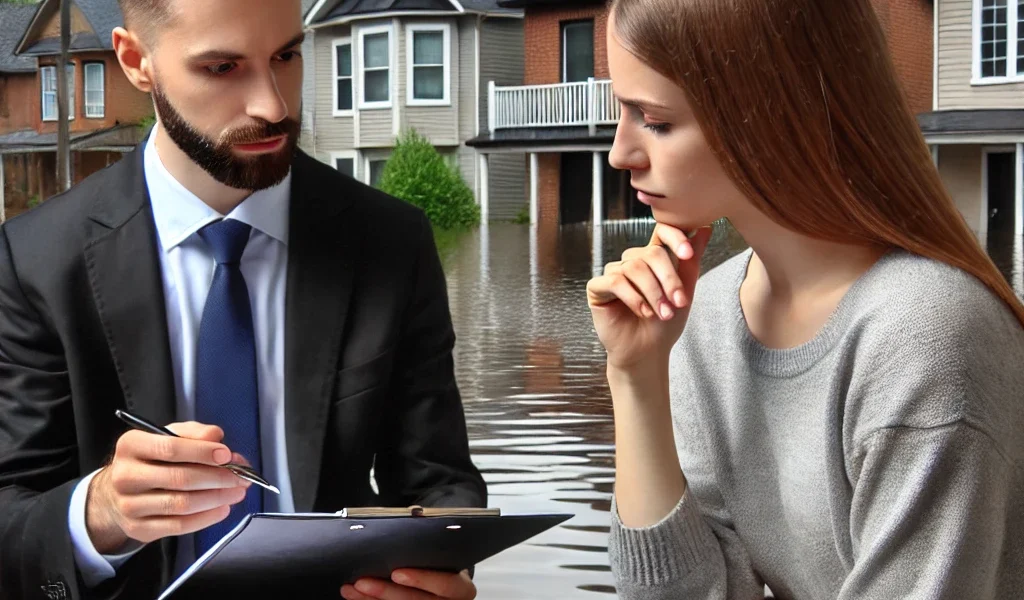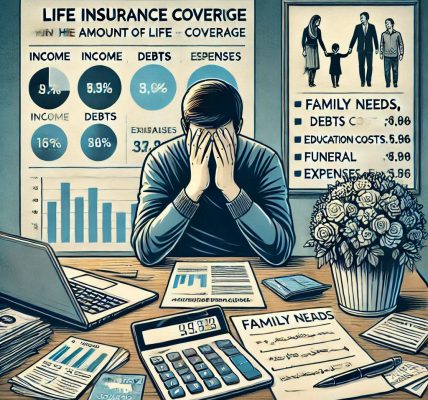Introduction
Floods are one of the most common and devastating natural disasters worldwide. While many homeowners and renters believe their standard home insurance covers flood damage, this is often not the case. Without flood insurance, individuals and businesses may face significant financial losses when disasters strike.
This comprehensive guide will explore what flood insurance covers, who needs it, how it works, and how to choose the right policy to protect your assets.
What is Flood Insurance?
Flood insurance is a specialized policy that provides financial protection against damages caused by flooding. Unlike standard homeowners or renters insurance, which typically excludes flood damage, a flood insurance policy specifically covers rising water and related destruction.
What Qualifies as a Flood?
According to the National Flood Insurance Program (NFIP), a flood is defined as:
- A temporary condition where two or more acres of land or two or more properties are inundated by water.
- Flooding caused by heavy rain, storm surges, melting snow, blocked drainage systems, or overflowing rivers.
Why You Might Need Flood Insurance
1. Your Homeowners Insurance Does NOT Cover Flooding
Many property owners mistakenly believe their standard home insurance covers flood damage. However, most policies explicitly exclude flood-related losses.
2. Floods Are Increasing Due to Climate Change
Rising sea levels, unpredictable weather patterns, and extreme rainfall have led to an increase in flooding. Areas that were once considered low-risk are now experiencing frequent flood events.
3. Flooding Can Happen Anywhere
Even if you live outside a designated high-risk flood zone, 25% of all flood claims come from moderate- to low-risk areas, according to FEMA.
4. Government Aid May Not Be Sufficient
Disaster relief programs provide limited assistance and usually require a presidential disaster declaration. These funds are not guaranteed and often come in the form of low-interest loans rather than direct financial compensation.
5. Flood Damage is Costly
Just one inch of floodwater can cause up to $25,000 in damage to your home, according to FEMA. Without flood insurance, you would have to pay out-of-pocket for repairs.
What Does Flood Insurance Cover?
Flood insurance typically covers two main areas:
1. Building Property Coverage
- Foundation, walls, and electrical systems
- Plumbing and HVAC systems (heating, ventilation, and air conditioning)
- Built-in appliances (stoves, refrigerators, dishwashers)
- Water heaters and fuel tanks
- Detached garages (up to a certain limit)
2. Personal Property Coverage
- Furniture and electronics
- Clothing and personal belongings
- Washer/dryer units
- Portable appliances
- Valuable items (up to specific limits)
What’s NOT Covered?
- Damage from mold/mildew due to neglect
- Currency, stock certificates, and precious metals
- Vehicles (covered under auto insurance)
- Basement improvements (flooring, paneling, drywall)
- Living expenses (temporary housing)
How to Get Flood Insurance
Flood insurance is primarily available through the National Flood Insurance Program (NFIP), but some private insurers also offer coverage. Here’s how to get a policy:
Step 1: Check Your Flood Risk
- Visit FEMA’s Flood Map Service Center (https://msc.fema.gov) to determine your risk zone.
Step 2: Contact an Insurance Agent
- Not all insurers offer flood insurance, so find an NFIP-approved provider or a private insurer.
Step 3: Compare Policy Options
- NFIP policies have set pricing, but private flood insurance may offer different coverage limits and premium costs.
Step 4: Choose Your Coverage Amount
- NFIP limits:
- Up to $250,000 for residential building coverage
- Up to $100,000 for personal property coverage
- Businesses may qualify for up to $500,000 in coverage
Step 5: Purchase and Observe the Waiting Period
- NFIP policies have a 30-day waiting period before they take effect.
- Some private insurers may offer shorter waiting periods.
Cost of Flood Insurance
Factors Affecting Premiums:
- Location: High-risk flood zones have higher premiums.
- Home elevation: Homes built above the base flood elevation have lower rates.
- Coverage amount: Higher limits mean higher premiums.
- Deductible: Choosing a higher deductible can lower your premium.
Average Costs:
- NFIP policies average $700 per year.
- Private insurance varies widely, but can sometimes be more affordable with higher coverage limits.
Flood Insurance vs. Disaster Relief
| Feature | Flood Insurance | Disaster Relief |
|---|---|---|
| Coverage Type | Financial compensation | Loans or grants (limited) |
| Availability | Available to anyone | Requires disaster declaration |
| Compensation | Pays for repairs/replacement | Often insufficient for full recovery |
| Repayment Required? | No | Yes (for loans) |
Flood insurance provides a guaranteed safety net, while disaster relief is uncertain and often insufficient.
Private Flood Insurance vs. NFIP
| Feature | NFIP | Private Insurers |
| Max Coverage | $250,000 (residential) | Varies (can be higher) |
| Availability | Nationwide | Limited in high-risk areas |
| Waiting Period | 30 days | Can be shorter |
| Customization | Limited | More flexible options |
For homeowners in low-risk areas, private flood insurance may offer better pricing and coverage options.
Conclusion: Do You Need Flood Insurance?
If you live in a high-risk flood zone, flood insurance is a must-have. However, even homeowners in moderate- and low-risk areas should consider purchasing a policy for financial protection.
Without flood insurance, the financial burden of rebuilding or repairing after a flood can be devastating. By investing in the right policy, you ensure peace of mind and financial security in the face of unpredictable natural disasters.
🚨 Don’t wait until it’s too late—assess your flood risk today and protect your home! 🚨
FAQ: Common Questions About Flood Insurance
Q1: Can renters get flood insurance?
Yes! Renters can purchase contents-only coverage to protect personal belongings.
Q2: Is flood insurance required?
It is mandatory for properties in high-risk zones with federally backed mortgages.
Q3: Does flood insurance cover hurricanes?
Yes, but only flood-related damage (not wind or storm damage).
Q4: Can I change my policy if my risk changes?
Yes! You can adjust coverage or switch to private insurance if needed.
Q5: Can businesses get flood insurance?
Yes, commercial flood insurance policies are available for business properties.
📢 Have you considered flood insurance? Share your thoughts in the comments below!




